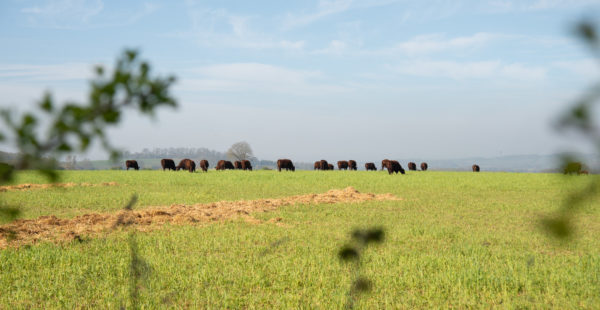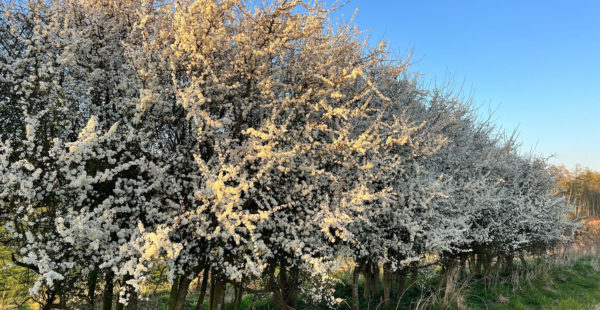A Week on the Estate: Chiffchaff Surge, Spring Arrivals & Beef Week
We hope you enjoyed a restful Easter break and that you managed to dodge the showers. As April rolls into May, a period of sunny, gradually warming weather is forecast, with daytime highs climbing from 15C on Saturday to 23C by Thursday.
The land certainly benefited from the last week’s rain and our trees, hedgerows and pastures are greening up nicely. Not to be left behind, our birdlife is busy and bustling as nesting season shifts into high gear. With that in mind, here’s a round-up of our BirdWeather top ten for the month to date:
1. Chiffchaff (33,018) / 2. Blue tit (15,487) / 3. Goldfinch (14,658) / 4. Goldcrest (9,857)
5. Woodpigeon (8,623) / 6. Pheasant (8,148) / 7. Long-tailed tit (6,972 / 8. Dunnock (6,584)
9. Robin (6,128) / 10. Wren (5,373)
In the month to date, our acoustic sensors logged 139,990 detections from 116 species. This compares with 96,973 activations from 111 species for the month of March. Of particular note is the chiffchaff: often heard, seldom seen and surely our most onomatopoeic songbird. In March, this little warbler placed 10th with 16,544 activations. In the latest tally, it’s shot to the top of the charts with 33,018 hits.
The chiffchaff (Phylloscopus collybita) is a tantalising songbird. While it’s a common resident in low-lying areas of England and Wales, and sings its simple refrain persistently in farmers’ fields and suburban gardens alike, it is rarely seen. It tends to prey on bugs in trees and hedgerows but will also take them in flight. We’ve included a photo (below). We’re quite sure you’ve heard them (sample song HERE) but do let us know if you’ve seen one. We’re not entirely sure why chiffchaff activations have surged but it could be a combination of seasonal factors and our hard work in boosting biodiversity across the food-chain.
Staying with birdlife, regular readers may recall that on 11th April we reported that the charismatic, amber-listed bittern appeared to be frequenting South Ormsby Estate. In January, our BirdWeather sensors recorded 50 activations. We kept an eye on the data and in the four weeks to 10th April we logged 93 bittern activations, the best scoring 5.5. This pattern has persisted and in the month to 25th April, we’ve logged 90 activations, the best again scoring 5.5 (98% confidence and 3% probability). Most exciting of all is that recent activations feature the male bittern’s low-frequency, long-range rumbling boom. The bittern really is the Barry White of the bird world.
Thinking back to our blog of 4th April, we reported BirdWeather hits for two more somewhat improbable visitors, the crested tit and the serin. In March, we had 134 hits for the crested tit, the best scoring 4.8 (92% certainty and 2% probability) and five hits for the serin, the best scoring 4.1 (94% certainty and 1% probability. Intriguingly, BirdWeather is still reporting activations for both species. In the month to 25th April, we had 80 hits for the crested tit with a best score of 4.8 (94% certainty and 2% probability). In the same period, we had 19 detections for the serin with scores ranging from 3.6 to 4.3 (while the certainty tends to be 90% or better, the probability of the species being here at all is around 1%). We’ll keep watching this space.






